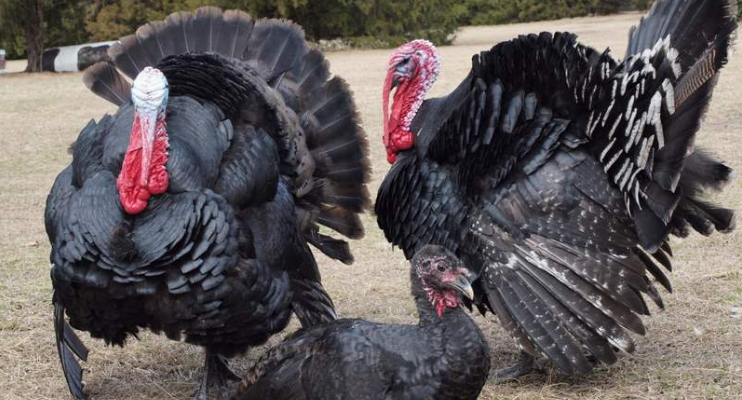As one of the slightly ‘rarer’ breeds, the black turkey is a lot less well known than it’s obvious counterparts.
The Norfolk Black (also known as the ‘Aztec’) is a well-known, once wild native to South America. The wild bird was discovered in Mexico, pilfered by Spanish explorers in the 16th Century and brought back to Europe for trade and farming. It was settled and reared in Spain before gradually filtering throughout the rest of Europe.
After several centuries of meat production, this turkey made it’s way back across the Atlantic to the Americas for trade and commerce. The birds later became the staple meal for the American Thanksgiving celebrations but as historians have noted, ironically, the birds consumed in those first celebratory meals may actually have originated from European, possibly Norfolk-bred livestock!
The Norfolk black is considered a good ‘all-rounder’, genetically healthy, unusual looks, superior taste and potentially now the oldest continual breed in the UK.
It’s also noted for its “calm disposition, rapid growth, and early maturation” and for its higher than usual fat ratio (turkeys are usually exceptionally lean). This increased fat ratio is actually an important factor for retaining moisture when cooked.
The sprawling countryside and flat landscape of Norfolk offered more than an adequate breeding ground for this breed of turkey. King Henry VIII was so enthralled by this exotic new meat that he purchased the birds directly from Norfolk farmers for every winter season. The turkey soon became a Christmas tradition nationally and so a healthy partnership between the Norfolk turkey farmer and Christmas consumer was born.
Although fairly common throughout Europe, and in particular Norfolk, the American Livestock Breeds Conservancy considers the breed ‘heritage’ and even an endangered variety in South America itself. It’s uniquely wild and international ancestry gives it some local charm but did you know at one-point it faced certain extinction in Norfolk?
Throughout the 1950’s East Anglia, amongst other places, was subject to several prolonged and virulent bouts of bird flu. Back then they called it ‘foul pest’ and it all but devastated local populations.
If birds infected with the flu survived, then in all likelihood, they’d be culled to protect neighbouring flocks and farms. It was these series of ‘foul pests’ which brought the black turkey industry to its knees. But thanks to a few traditionally minded older farmers, who safely ring fenced breeding pairs, the breed may have been lost altogether.
This breed of turkey is now thriving and as popular, healthy and delicious as ever. Yet if it hadn’t been for those early Spanish explorers, Henry VIII and some smart thinking Norfolk farmers it would have been quite a different Christmas meal we’d all be consuming!

